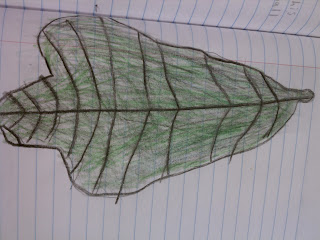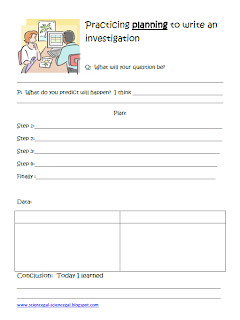
I am linking up with the Clutter Free Classroom to share how we set up our notebooks this week in my classroom!
Do you teach your children what goes in your science notebook? This year we added a page to our journal to show what it would look like to set up our notebook.
First...we all glued down our table of contents. This is a form that shows what we are teaching during the year with a blank space for writing down page numbers.
I printed it out on a half sheet so they could glue it into their notebook on the first page as a place to start.
Next, we made a title for the first unit: Science Inquiry.
The students were able to personalize the page (and will continue to do this throughout the year as we explore new topics.)
This is an example of Emma's page:
Okay...so once we have done this it's time to get down to business. I wanted a page that shows the set up of a notebook entry. First, we discussed it as a class and I wrote it on an anchor chart.
Q= Focus Question
P = Prediction
H = Hypothesis (If...then...statements)
Data= Data in many forms
C = Conclusion
R = Reflection
Here is what it looks like in Craig's notebook...
By the way, the sentence starters I found online through pinterest and were free from Frogs and Cupcakes.
Now we are ready to begin...stay tuned for how we start the year with a Mentos Exploration!








































